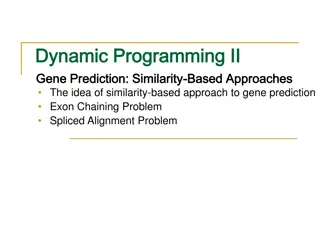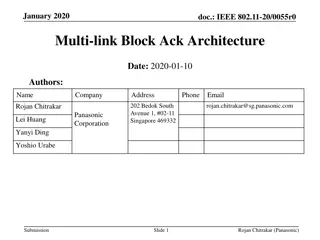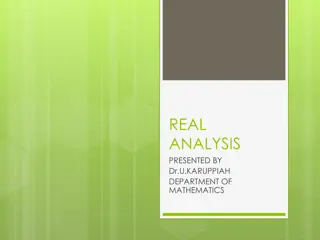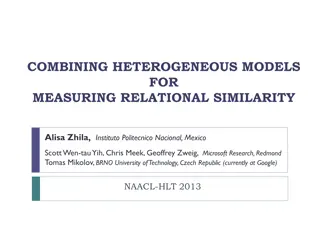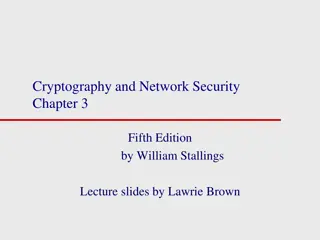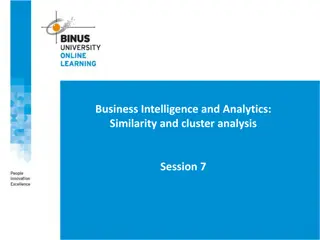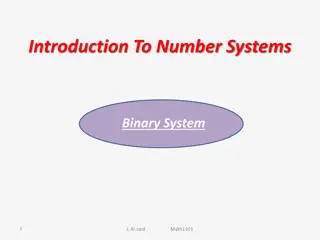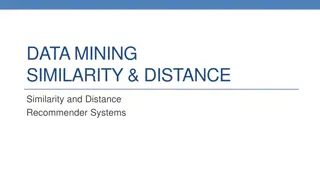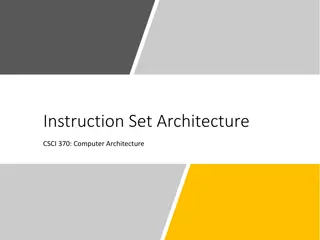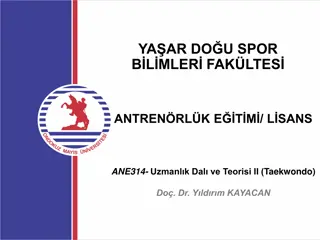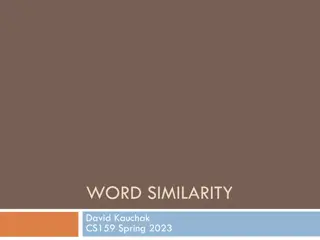Binary Basic Block Similarity Metric Method in Cross-Instruction Set Architecture
The similarity metric method for binary basic blocks is crucial in various applications like malware classification, vulnerability detection, and authorship analysis. This method involves two steps: sub-ldr operations and similarity score calculation. Different methods, both manual and automatic, have been proposed for basic block embedding and analysis. The INNEREYE-BB method utilizes neural machine translation for comparing binary code similarities beyond function pairs. The methodology involves encoding, decoding, and neural machine translation for x86 and ARM basic blocks, which are then aggregated to obtain the basic block embeddings.
- Binary Basic Blocks
- Similarity Metric
- Cross-Instruction Set Architecture
- Malware Classification
- Neural Machine Translation
Download Presentation

Please find below an Image/Link to download the presentation.
The content on the website is provided AS IS for your information and personal use only. It may not be sold, licensed, or shared on other websites without obtaining consent from the author. Download presentation by click this link. If you encounter any issues during the download, it is possible that the publisher has removed the file from their server.
E N D
Presentation Transcript
Similarity Metric Method for Binary Basic Blocks of Cross-Instruction Set Architecture Xiaochuan Zhang zhangxiaochuan@outlook.com Artificial Intelligence Research Center, National Innovation Institute of Defense Technology, Beijing, China
Content Background 01 Methodology & Implementation 02 Experiment & Result 03
Background Binary program similarity metric can be used in: malware classification vulnerability detection authorship analysis The similarity between basic blocks is the basis
Background Two step of basic block similarity metric sub ldr ldr ldr sp, sp, #72 r7, [r11, #12] r8, [r11, #8] r0, .LCPI0_0 [0.24, 0.37, , 0.93] Similarity Score [0, 1] movq movq movq movabsq $.L0, %rdi %rdx, %r14 %rsi, %r15 %rdi, %rbx [0.56, 0.74, , 0.31] Basic Block Embedding Similarity Calculation
Background Type of methods manually each dimension corresponds to a manually selected static feature [1-3] basic block embedding static word representation based methods [4-7] automatically INNEREYE-BB, an RNN based method [8] [1] Qian Feng, et al. Scalable Graph-based Bug Search for Firmware Images. CCS 2016 [2] Xiaojun Xu,et al. Neural Network-based Graph Embedding for Cross-Platform Binary Code Similarity Detection. CCS 2017 [3] Gang Zhao, Jeff Huang. DeepSim: deep learning code functional similarity. ESEC/SIGSOFT FSE 2018 [4] Yujia Li,et al.Graph Matching Networks for Learning the Similarity of Graph Structured Objects. ICML 2019 [5] Luca Massarelli, et al. SAFE: Self-Attentive Function Embeddings for Binary Similarity. DIMVA 2019 [6] Uri Alon, et al. code2vec: learning distributed representations of code. PACMPL 3(POPL) 2019 [7] Steven H. H. Ding, et al. Asm2Vec: Boosting Static Representation Robustness for Binary Clone Search against Code Obfuscation and Compiler Optimization. S&P 2019 [8] Fei Zuo, et al. Neural Machine Translation Inspired Binary Code Similarity Comparison beyond Function Pairs. NDSS 2019
Background INNEREYE-BB [1] ?= ?(??, ? 1) 1 2 3 4 5 ?1 ?2 ?3 ?4 ?5 ldr r0 .LCPI0_115 bl printf scanf memcpy FUNC [1] Fei Zuo, et al. Neural Machine Translation Inspired Binary Code Similarity Comparison beyond Function Pairs. NDSS 2019
Methodology & Implementation Idealized Solution (based on PERFECT TRANSLATION assumption) Encoding Decoding Neural Machine Translation x86 BB ARM BB ? ? matrix Aggregation Encoding Aggregation BB embedding
Methodology & Implementation Practical Solution
Methodology & Implementation x86-encoder pre-training data: NMT model: Optimization goal: minimize the translation loss x86-ARM basic block pairs Transformer [1], other NMT models also work [1] Ashish Vaswani, et al. Attention is All you Need. NIPS 2017
Methodology & Implementation ARM-encoder training & x86-encoder fine-tuning data: Optimization goal: minimize the margin-based triplet loss basic block triplets, {anchor, positive, negative} semantically equivalent basic block pair margin positive negative anchor
Methodology & Implementation Mixed negative sampling Hard Negatives: Similar but not equivalent to anchor 33% 67% Random Negatives Hard Negatives
Methodology & Implementation Hard negative sampling: if anchor is a x86 basic block ??????? anchor(x86) ?? ?? rand_x86_1 ?? pretrained x86-encoder ?? rand_x86_2 rand_x86_t rand_ARM_t ?? ?? rand_x86_n
Methodology & Implementation Similarity Metric Euclidean distance embedding dimension
Experiment & Result Setup prototype: MIRROR https://github.com/zhangxiaochuan/MIRROR MISA, 1,122,171 semantically equivalent x86-ARM basic block pairs https://drive.google.com/file/d/1krJbsfu6EsLhF86QAUVxVRQjbkfWx7ZF/view Dataset:
Experiment & Result Comparison with Baseline * Higher is better
Experiment & Result Evaluation of negative sampling methods * Higher is better
Experiment & Result Effectiveness of pre-training The pre-training phase seems redundant?
Experiment & Result Effectiveness of pre-training * Higher is better
Experiment & Result Visualization
Thanks! zhangxiaochuan@outlook.com





